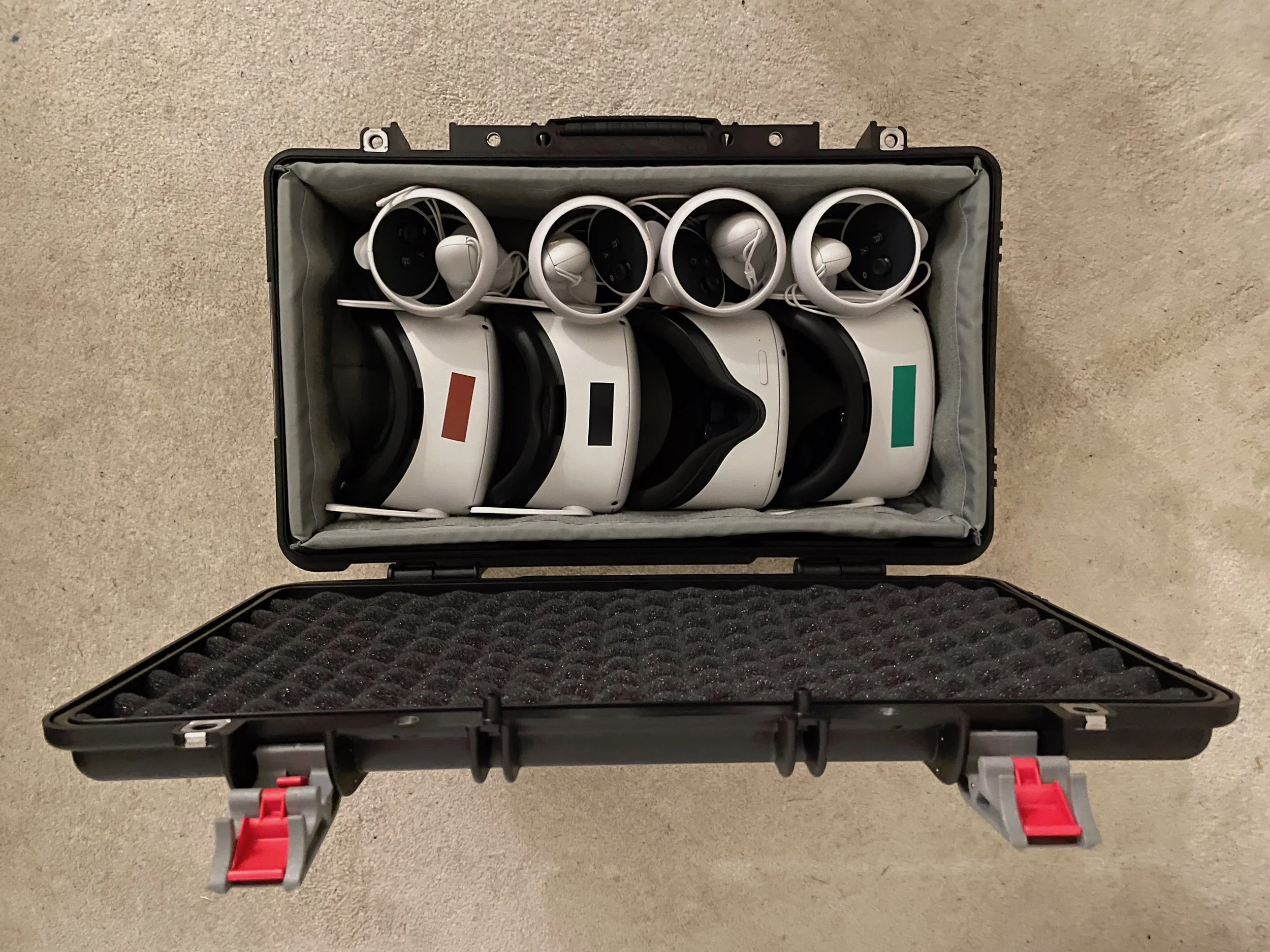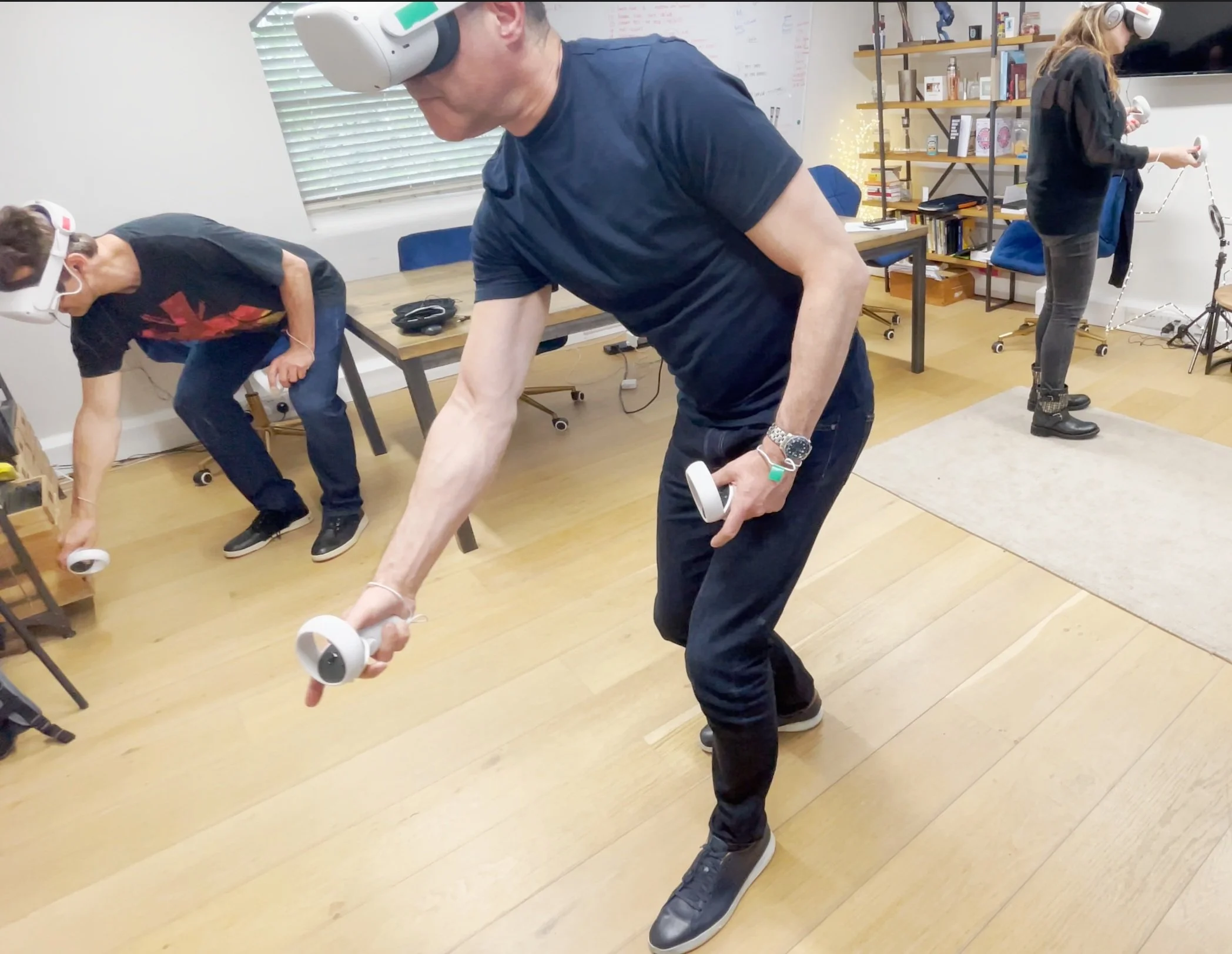Neuroscience-Infused, AI-Driven, VR Maths Games
-

Why VR?
Virtual Reality headsets, when used correctly, are like a blindfold blocking out distractions.
Teenagers lives are saturated with screen time and outside of the VR headset, their multitasking habits are reducing attention spans to vanishingly narrow time windows.
This is a major problem when trying to study maths because cracking a problem requires sustained attention - the ability to keep at it until the penny finally drops.
And it’s not just kids who are struggling to pay attention in the real world: this article captures the problem quite well.
At Brain Man VR we create educational games in a fully immersive 3D environment that makes it impossible to be distracted by other screens and so enables the user to find flow more easily.
Flow describes operating at a satisfying level where the tasks you are performing are not to easy, not to hard, but just right to keep you motivated.
This is really important for neuroscientific reasons that we go into next.
-

Why Neuroscience
Neuroplasticity describes the brain’s capacity to make meaningful physical changes to the structure of its neuronal pathways through regular, intensive practice of any given ability to improve performance when carried out over long periods of time.
In other words we can change our brains according to what we do with them.
The secret to the recipe is that the practice must be regular (ideally daily), it must be intensive (5 mins is not enough) and the practice must be kept up for weeks not days.
Our use of smartphones is something we do regularly, intensive and over extended periods of many weeks and so it changes the structure of our brains to adapt our abilities to the demands of the digital environment. Because most things people do on phones encourage rapid skipping between different tasks, this environment is making people’s attention spans shorter.
At Brain Man VR we are helping GCSE Maths students to focus for longer by:
1) blocking out the distractions from the outside world
2) helping them get into flow by gamifying the learning process and, most importantly
3) clocking up enough time “in the zone” doing mathematical thinking to slowly but surely lengthen attention spans by bolstering the neural networks in the user’s brain that supports those capabilities.
Most people don’t realise that there are two competing attention systems in our brain. The only reason I do is because I studied neuroscience to post-doctoral level over the course of 15 years.
One attention system acts as the circuit breaker, jolting us away from whatever we occupied with to make us focus on a loud noise or sudden movement that could (potentially) indicate imminent danger.
The other attention system enables us to focus on one stream of information over another, until the current goal has been completed.
But how often do we open our smartphones when we hear the ping of a text message, only to spend 20 minutes doing lots of other things before we finally remember what the original goal was.
The different apps each compete for our attention and so our ability to sustain attention shrinks and shrinks.
Brain Man VR helps teenagers build up their ability to sustain attention for longer, so that they can stick at any given maths task for long enough to change the pathway to make that task easier and easier, day after day.
-

Why Artificial Intelligence
Education has a problem: overcrowded classrooms mean a lack of individual attention for students. This problem is nothing new. It’s been stopping students reaching their full potential all over the world for hundreds of years.
Teachers simply can't help all their students at the same time. They can’t help everyone who needs help at the same time. So inevitably some students end up getting more attention than others. Many students soon feel overlooked and stop asking for help when they need it. They stay stuck, start to become more and more despondent, telling themselves that they just “can’t do maths”.
Brain Man VR solves this problem by gamifying the acquisition of tough maths topics to reduce friction in the learning process AND incorporating a personalised AI maths tutor into the game that the student can turn to whenever they get stuck.
Users simply hit a button to summon the tutor, speak their question out loud and get a succinct verbal response to help them understand where they're going wrong.
Unlike real life tutors the AI tutor never gets bored of being asked the same question over and over again. And with access to a huge repository of best practices in maths pedagogy, they can change the way they explain the problem over and over again until one of the explanations actually resonates with the student.
The AI maths tutor helps the penny to drop faster. We focus on the topics that are trickiest to teach so that teacher and tutors can use our games to help unstick their students when the need arises.
